
One of the biggest challenges faced by software teams is productivity. It’s not hard to see why.
Software development is a complex process, and it takes a lot of work to get it right. The more people are involved in the process, the more complexity you’re adding to your project.
The challenge for companies is finding ways to improve productivity without sacrificing quality.
In this article, we’ll share a few tips for improving your team’s efficiency and ensuring that your developers are working at peak performance.
Table of Contents
Create a distraction-free environment for them
You probably already know that the most productive work happens when you concentrate, go deep, and stay focused.
You do your best work if you don’t get distracted easily, don’t check your email every five minutes or take phone calls.
It’s something that psychologist Mihaly Csikszentmihalyi calls the flow state because a person feels completely immersed in their activity and fully present in their environment.
In this state of flow, you can produce the best results in the shortest time.
But how do you create such an environment for developers so that they can enter their deep work state?
First, bear in mind that, according to a study by the University of California, it takes more than 20 minutes for an average employee to get back to work after being interrupted.
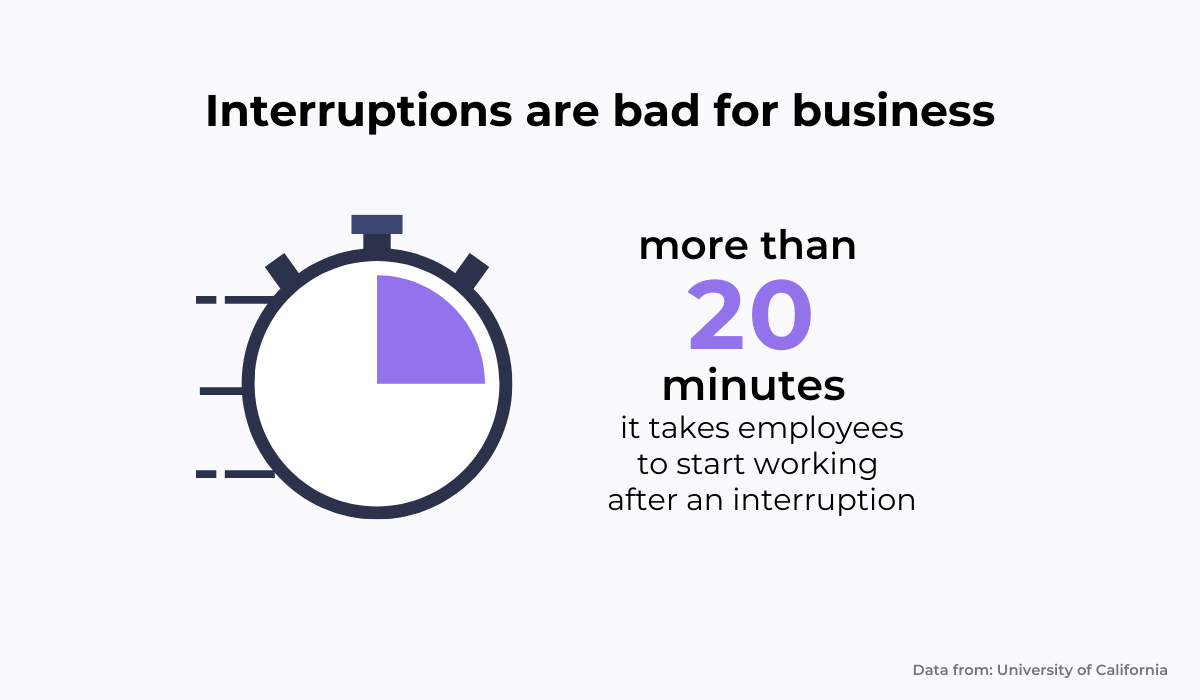
This means that if developers are constantly distracted during the day, it can take up to four hours to regain their concentration level.
This also means that any interruptions during the day can have a significant impact on their productivity.
Therefore, to help developers avoid distractions and get them into a state of deep concentration, you can start with small courtesies everyone can follow.

Get unreal data to fix real issues in your app & web.
For example, if someone has headphones on, you can set the rule not to bother them.
Some teams handle interruptions by politely asking colleagues not to disturb them with non-urgent issues.
Other teams have adopted the “Do not disturb” sign that developers can put up, as you can see in the screenshot below.

Next thing you can do is to not put your developers in noisy environments where they’ll be distracted by other people’s conversations or the sound of other machines running around them–like an open office space or shared workspace–unless there’s no other option available.
If possible, give your developers their own private office where they can focus on their tasks without being bothered by interruptions.
Additionally, enable them flexible scheduling or remote work options.
If you want your developers to be happy and productive, it’s a good idea to let them work at times of the day when they’re most effective.
Research has shown that, although the majority of people are more productive in the morning, others get into the groove of things in the afternoon or once nighttime comes, as the picture below vividly demonstrates.
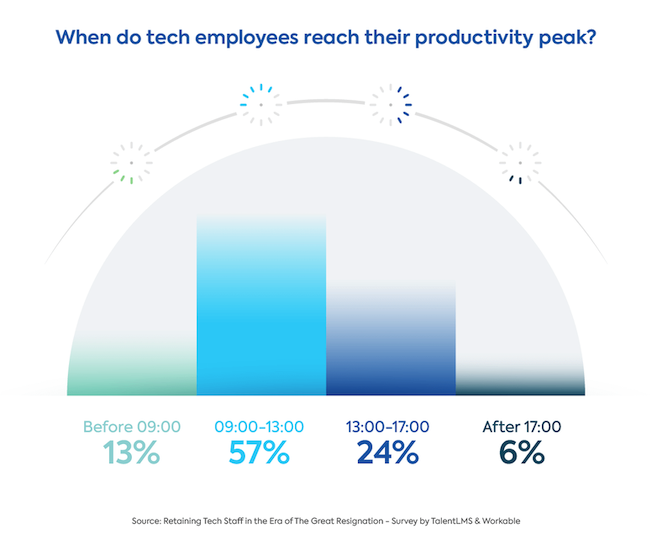
Therefore, let developers organize their schedules as they see fit–just make sure they’re hitting deadlines while doing it!
As you can see, in today’s world, where distractions are everywhere, where there’s an ever-present stream of notifications and emails, people passing by, and machines humming, it can be hard for a team of developers to focus.
However, if you want to improve the productivity of your team, try to do everything you can to make your workspace more conducive to getting work done.
Let developers focus on development
Unfortunately, the truth of the matter is that developers usually have to do a lot of things that aren’t development.
They often have to answer too many emails, which distracts them from what they should be doing.
Sometimes they’re being swamped by tedious administrative tasks. Other times they might be stuck in meetings that don’t even pertain to their work.
In fact, research suggests that one of the biggest drains on productivity comes from meetings with low engagement.
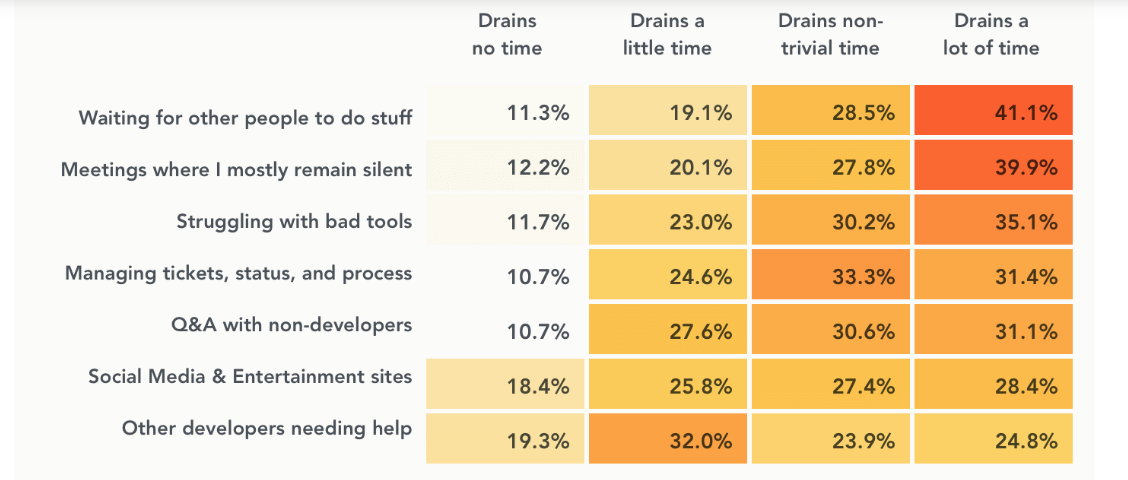
Therefore, If you want your developers to be more productive, make sure that they can focus on their key responsibilities as much as possible, such as writing code, instead of worrying about other non-core tasks or spending too much time in meetings.
According to Donna McGeorge, author of The 25 Minute Meeting: Half the Time, Double the Impact, a meeting should not last more than 25 minutes if you want it to be productive.
If your developers are in a meeting for more than an hour, they are likely wasting their time.
Consider if the meeting is necessary at all.
If there is no emergency or immediate need for feedback or input from developers, consider holding off on the meeting until later or canceling it altogether.
Some companies have taken it a step further and implemented days without meetings, such as no-meeting Wednesdays, reserving certain days for uninterrupted productivity.
For example, at Zoom, they first tried no-meeting Wednesday as an experiment, and a year later, 84% of their employees stated that they wanted to continue with the practice.
Some of them view it as their sacred day, while others can’t ignore the positive effect it has on their productivity, as you can see in the feedback below.

From Zoom’s example, it’s clear that if you want people to focus on work that produces results, they need time away from meetings.
Hence, let developers focus on development and only call them into meetings when necessary.
If they thrive, so will the rest of your company. And that is a pretty good reason to eliminate unnecessary meetings and other non-core tasks from their schedule!
Work in Sprints
We’ve all been there. You get started on something and think it’ll take two weeks to complete.
Then another week goes by, and you realize that the project will take much longer than you expected. When this happens, it’s easy to get sidetracked or lose sight of the big picture.
The solution is simple: Break up your projects into smaller chunks called sprints (or iterations), and most likely, you won’t experience that kind of problem.
But what exactly is a sprint?
A sprint is a period of time during which you focus on one particular aspect of your work.
For example, if your team is working on a mobile app that is supposed to be released next year, you could create short sprints that focus on specific features or small pieces of functionality.

As you can see in the image above, each sprint would represent a small part of the entire project that’s complete enough for users to see what it does at the moment and provide feedback about what they would like changed or added before releasing it publicly.
But what does this have to do with productivity, you may wonder?
Let’s first look at the statistics to get a better understanding of this problem.
A PwC study of more than 10,640 projects discovered that only 2.5% of companies completed all of their projects successfully.
The rest either fell short of their original objectives or missed the deadlines or budget.
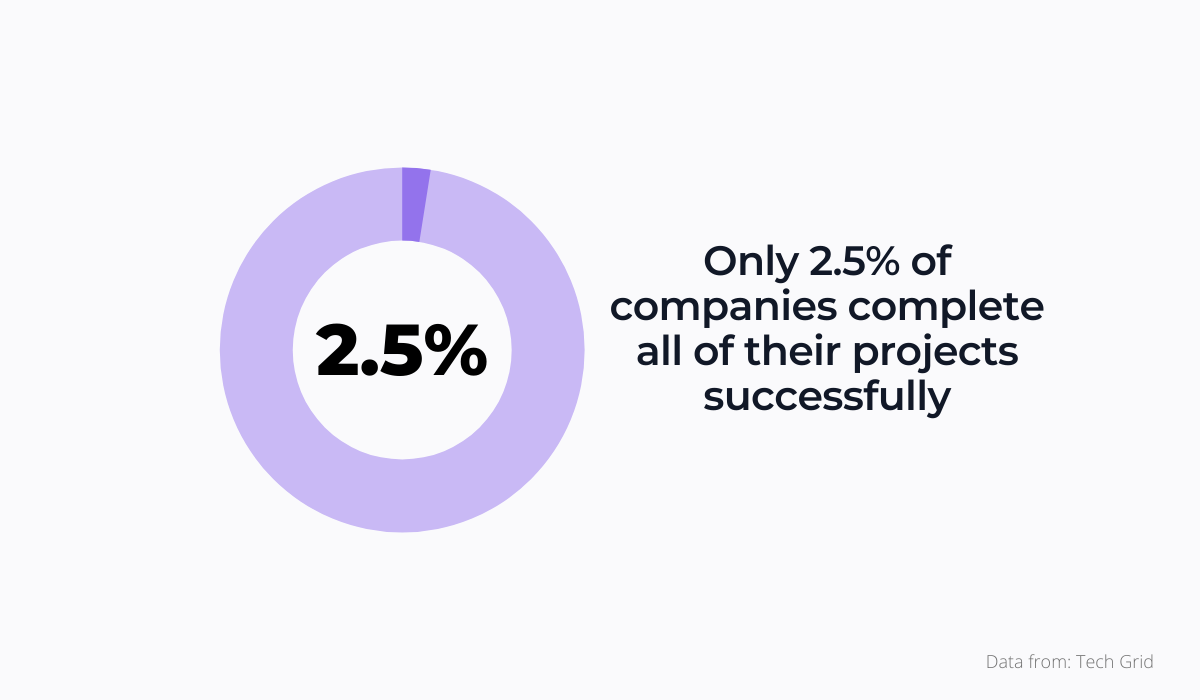
Sprints help development agencies not to become a part of that statistic because they enable developers to focus on what needs to be done and prioritize tasks based on their value and importance.
They also ensure that developers don’t get bogged down in minor details or tasks that aren’t part of the project’s core goals.
By limiting themselves to working on one thing at a time, developers can make more progress in less time than if they tried to juggle multiple projects simultaneously.
And all this combined leads to greater productivity.
Train Your Developers to Grow Their Skillset
A good developer is worth their weight in gold. They’re the backbone of every successful business, and they can make or break your company.
When you have great developers on your team, you should do everything in your power to keep them motivated because motivation leads to productivity, which leads to better work.
One of the best ways to do this is by enabling training and skill growth since most developers consider learning and upskilling opportunities key factors for their motivation.
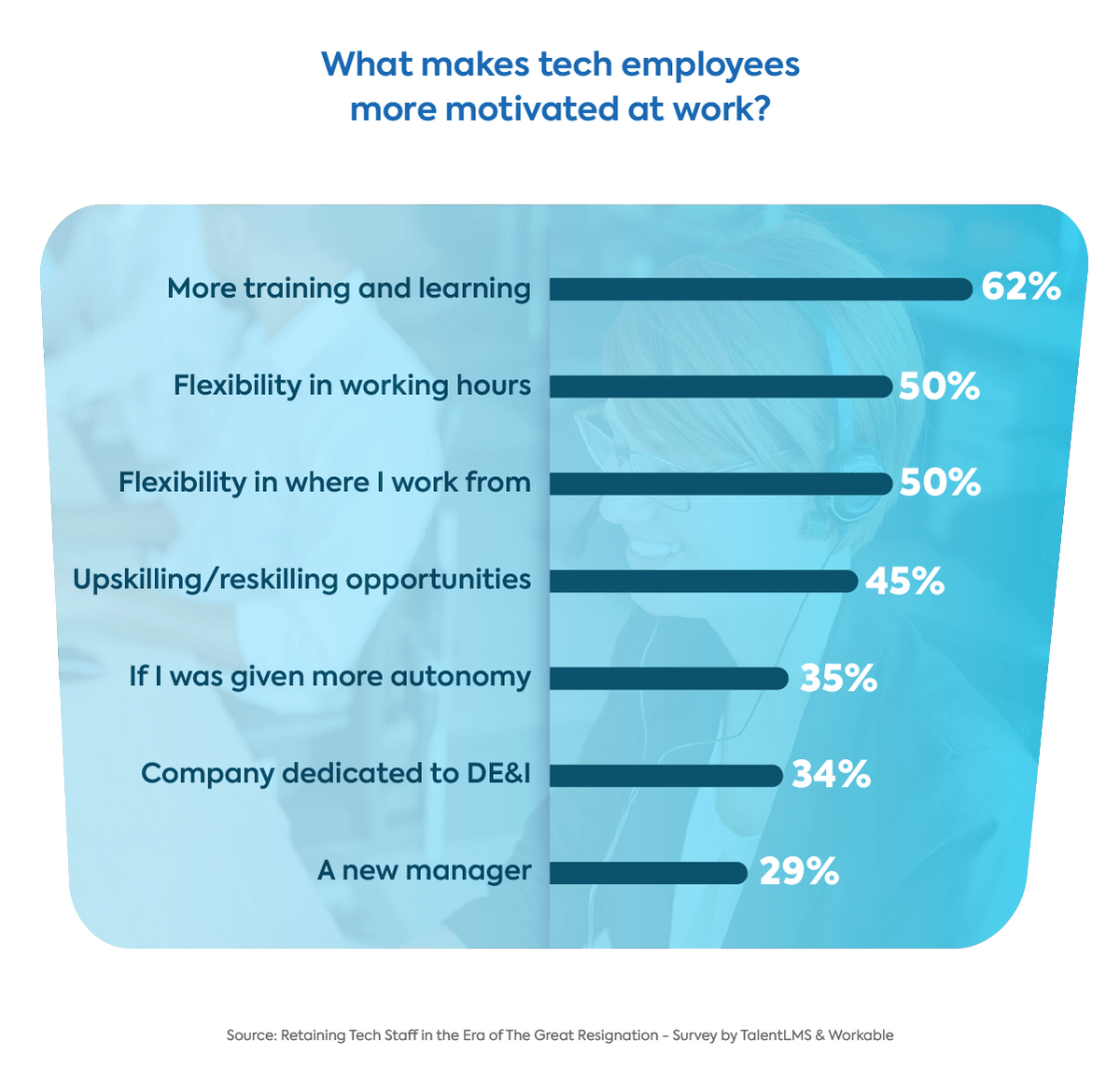
This can include structured training, conferences, certifications, and informal learning such as working with senior engineers or a mentorship program.
Let’s look at Buffer and its extensive mentorship program to get a clearer picture.
At Buffer, they offer mentorship to both junior and experienced developers. A senior back-end engineer who wants to learn front-end can be a mentee too.
But they offer mentorship opportunities to the mentors too by pairing them with mentorship champions, highly experienced mentors, and engineers.
As you can see in the review below, the feedback has been outstanding; one of the mentees shared their excitement about the whole mentorship experience.

So mentorship is an excellent way for companies to cultivate their talent pool by providing opportunities for people to grow their skills through one-on-one guidance.
You can also offer your developers online training resources.
The internet is full of valuable online classes on almost every topic under the sun.
For example, Udemy, Coursera, and Skillshare are some of the comprehensive online platforms where you can find such tutorials.
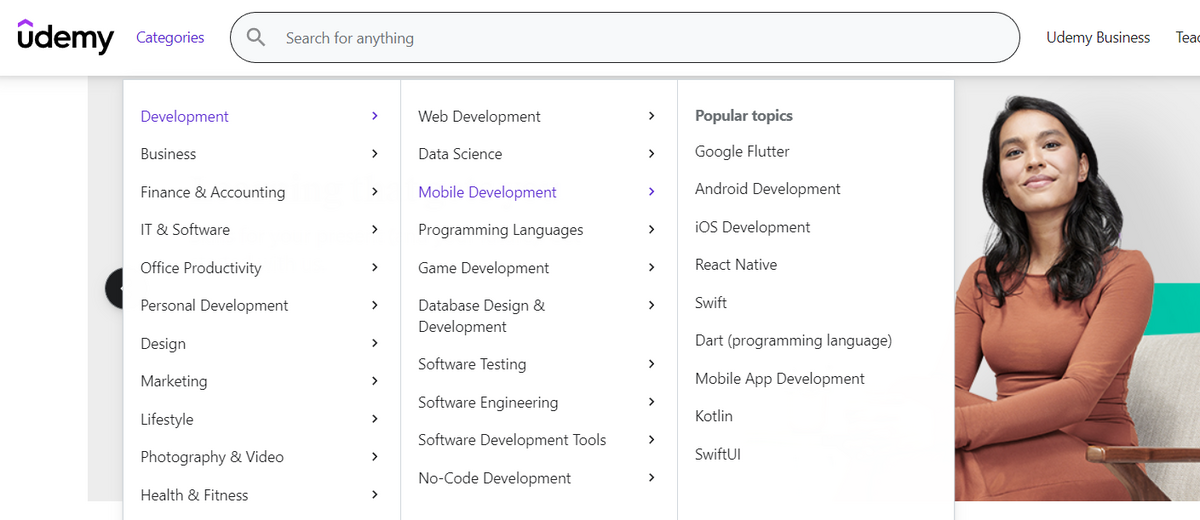
Online resources can help employees keep up with developments in their fields and give them access to tutorials that help them sharpen their skills or learn new ones altogether.
Additionally, you can encourage employees to attend conferences and events where they can learn more about different aspects of programming or other technical topics that interest them most.
However, it’s important that you make it easy for your teams to participate in these programs.
This might mean providing them with time off or flexible schedules so they can attend the classes without having to sacrifice their day jobs or projects.
Use Tools to Enhance Team Productivity
Nowadays, software teams are expected to move faster and deliver more.
The question is how to keep up?
By using tools that help developers work smarter, not harder. The right tools can make all the difference in how quickly a project gets completed and how well it’s executed.
Several tools can help your team increase its productivity. Here are some of our favorites.
You probably already use a messaging tool like Slack or Microsoft Teams, but if not, they’re worth checking.
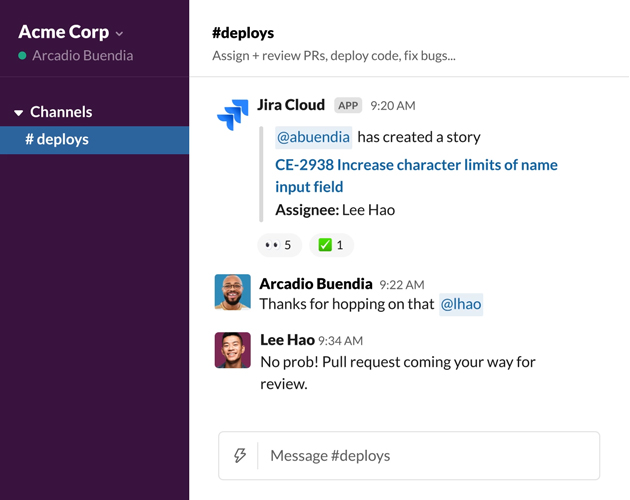
If there are multiple developers who need access to the same information at once–such as when someone asks a question or needs help with something–this can be an effective way to keep everyone updated at once instead of sending emails back and forth.
Next, if you want to keep everything on track, Jira might be just the tool you’re looking for.
It’s one of the best project management tools for software development available today as it allows teams to track issues, bugs, and tasks from start to finish.
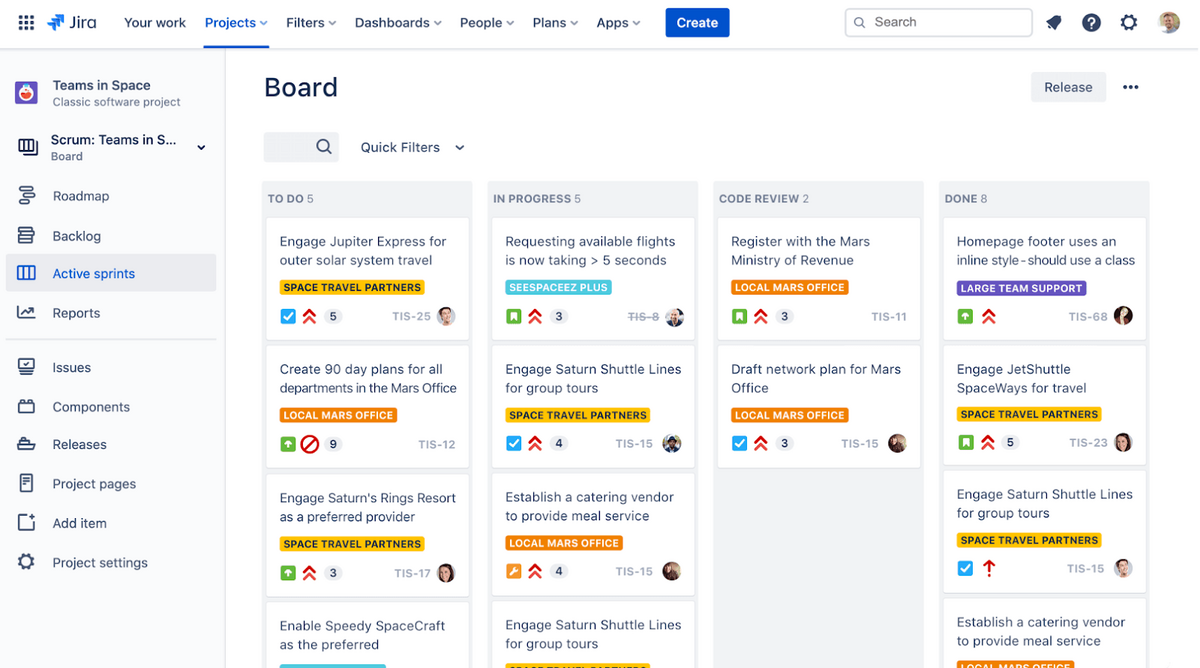
Jira also integrates with other apps like Salesforce or GitHub, making it a powerful tool for managing all aspects of software development projects at once, from testing to development to deployment.
One of the most tiresome and time-consuming issues developers have to face in their day-to-day work is debugging.
It’s so unpopular among some devs that they would rather pay bills, go to the dentist, and spend time with in-laws than fix bugs in the code.
Luckily, there are tools like our own software, Shake, that make it easier than ever to find bugs and improve the quality of mobile apps.
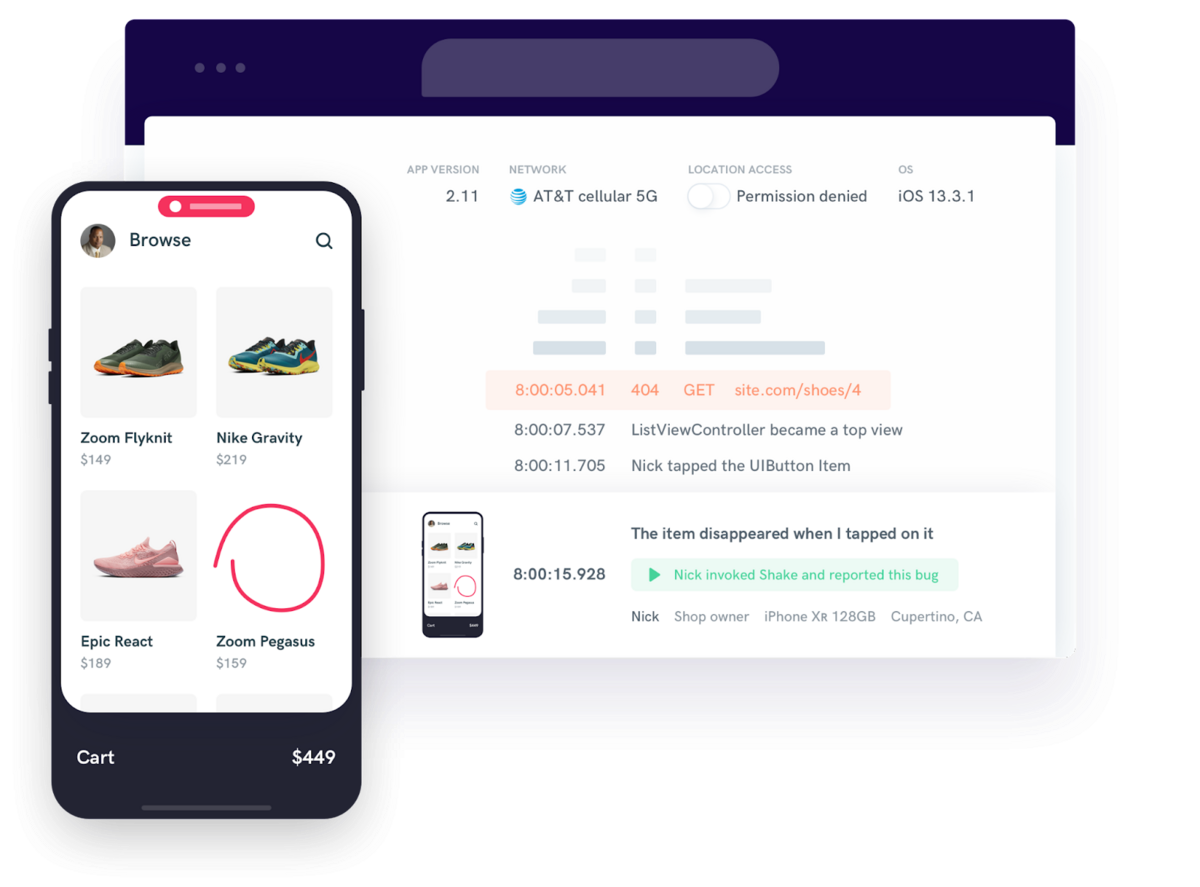
When developing a mobile app, developers can easily spend hours or days trying to find a bug that only occurs once in a blue moon.
With Shake, all they need to do is run the app and shake their phone, and the tool will take a screenshot along with some other metadata that helps them understand what went wrong.
It allows developers to automate all the tedious parts of finding bugs in mobile apps, so they can focus on what really matters–improving their code base and building new features.
As you can see, by using the right tools, you can dramatically increase your team’s productivity and quality of work.
Set individual expectations
A team of developers can accomplish more than one person working alone. A group of developers can share ideas, discuss solutions and help each other out.
But it takes more than just a good idea to make a successful software development team.
You need to set goals and define clear roles for all of your team members, so they can work together efficiently and effectively.
In fact, employees who are crystal clear about what their role entails report high levels of productivity, effectiveness, and intention to stay.
Unfortunately, only 53% of employees know explicitly what is expected of them.
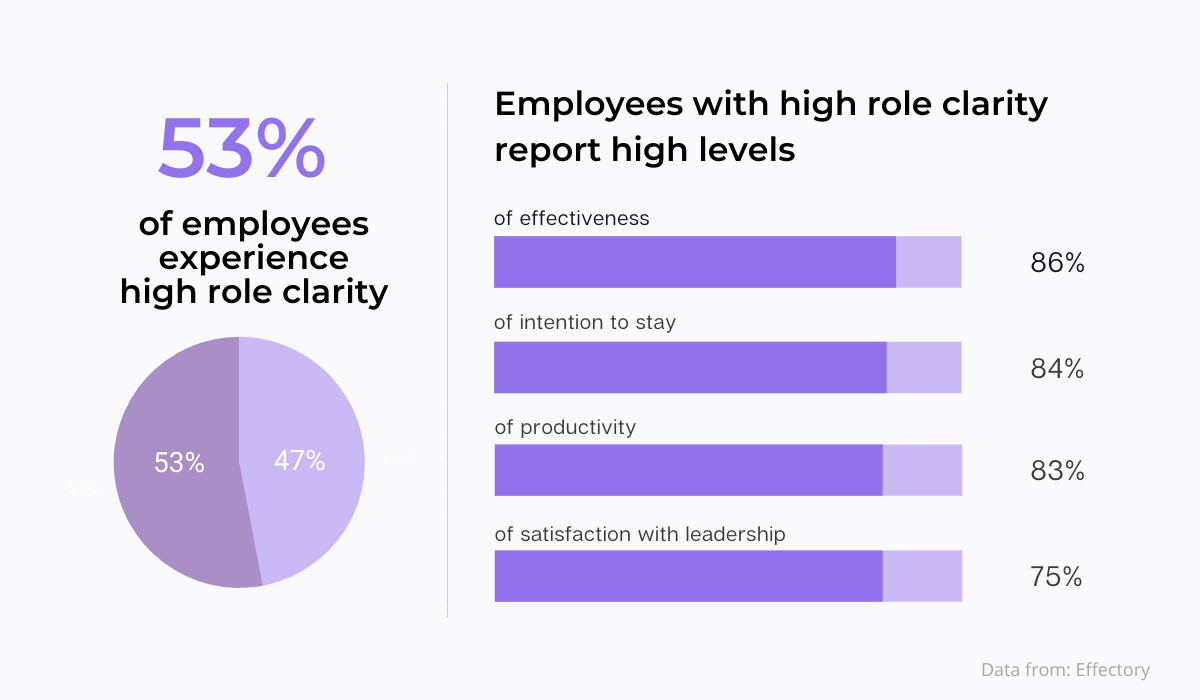
Therefore, if you want to reap the benefits of productivity that role clarity brings to the table, the first thing you should do is set individual goals for all members of your team.
You can achieve that by holding one-on-one meetings with each of your developers regularly.
During these meetings, talk about what is expected of them. This includes what they’re supposed to do and how they will do it.
This kind of knowledge will help them stay focused on their goal and ensure they don’t waste time doing things that aren’t relevant to their role.
However, try not to micromanage your developers. If you don’t trust them to decide what needs to be done, how can you expect them to be productive?
Overly detailed instructions from management can be very counterproductive, especially when it comes to software development projects.
In fact, they can negatively affect your developers’ morale, motivation, and engagement.
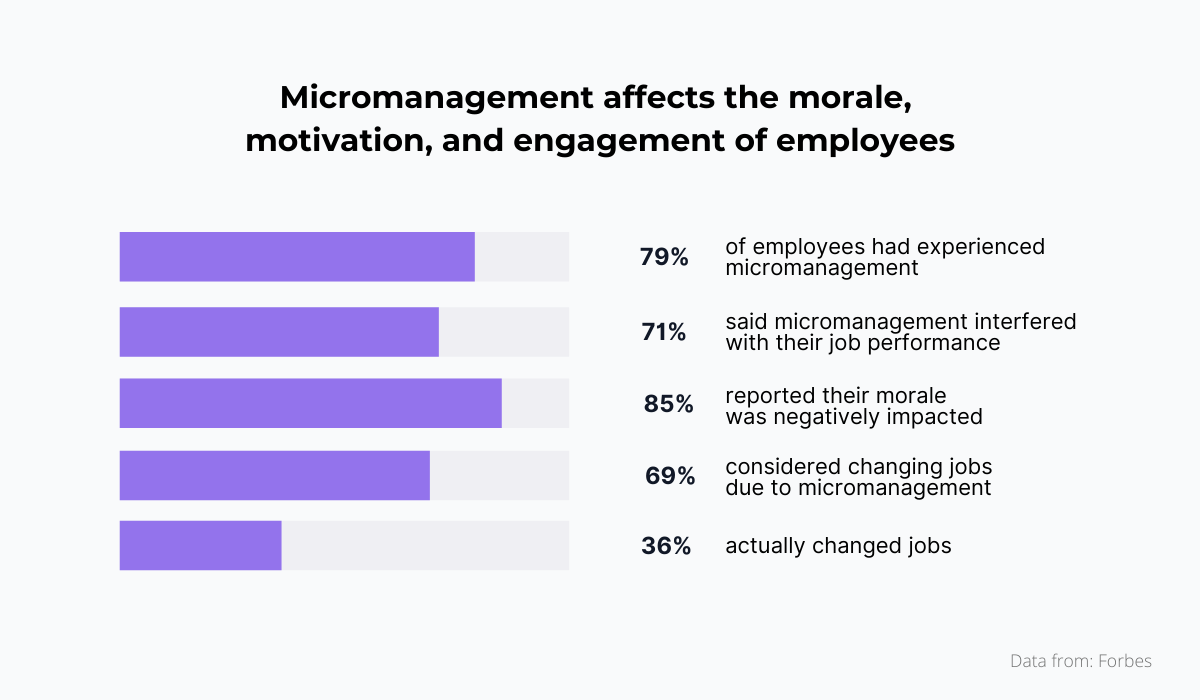
The best and most productive teams are those where everyone is given a certain amount of autonomy over their work–even if some of their work doesn’t meet all of your expectations.
To sum up, by setting clear goals for every developer on your team and giving them a certain amount of freedom in their tasks, you’ll give everyone a roadmap for success that’s easy to follow.
Have frequent feedback loops
If you want to boost your team’s performance further, you should use feedback loops.
In a nutshell, this applies to the process of giving people immediate and regular feedback on their work. It’s a simple idea, but one that can have a huge impact on your team’s effectiveness.
The more often you provide constructive criticism, the more quickly people can learn from their mistakes and improve their work. And the better they’ll perform in the future.
Therefore, when working on a project, you should use feedback loops frequently.
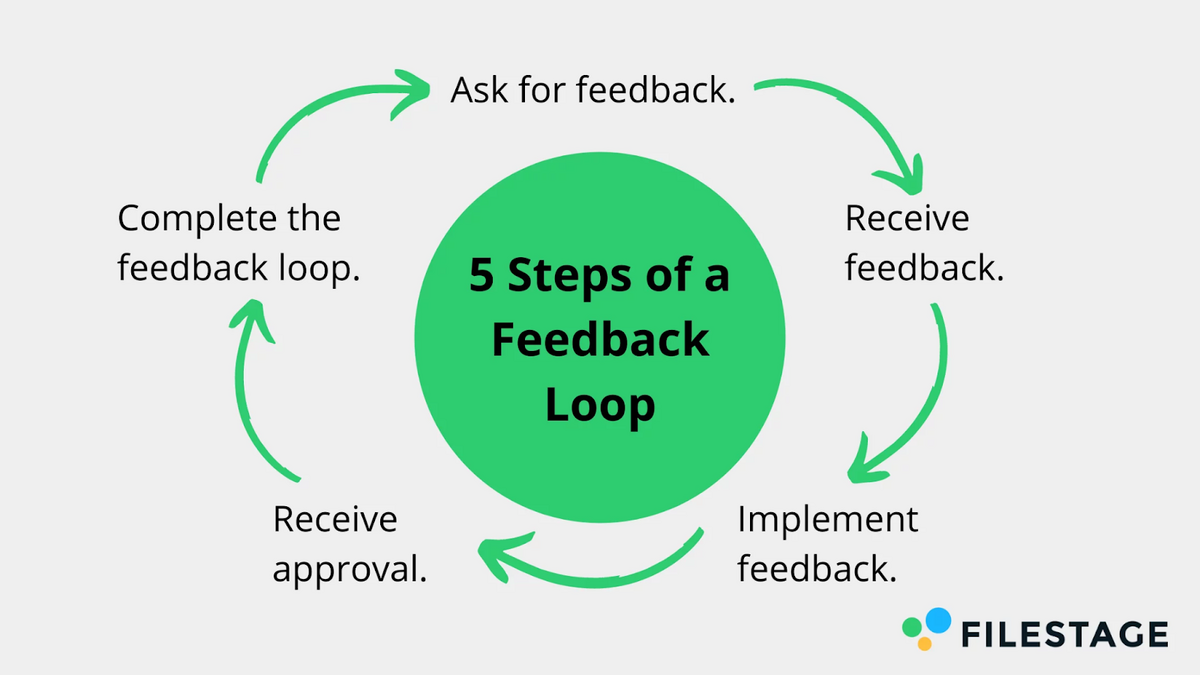
However, every team member needs to understand how feedback loops work so that they can all contribute to making the process better for everyone involved.
For starters, feedback loops are a team effort; they’re meant to involve everyone who works on a project, not just one developer or a small group of people.
For example, with software development projects, there are often daily stand-up meetings where the entire team gets together and discusses what they’ve been working on, what issues they’ve encountered, and what progress they’ve made since the last meeting.

Capture, Annotate & Share in Seconds with our Free Chrome Extension!
This helps everyone see where things stand and identify issues early on so that they can be resolved quickly.
Retrospectives are another kind of feedback loop that can be used at any point in the process—after sprints, after releases, or even after months of working together as a team.
The idea behind retrospectives is that no matter how well things go on a project, there will always be room for improvement.
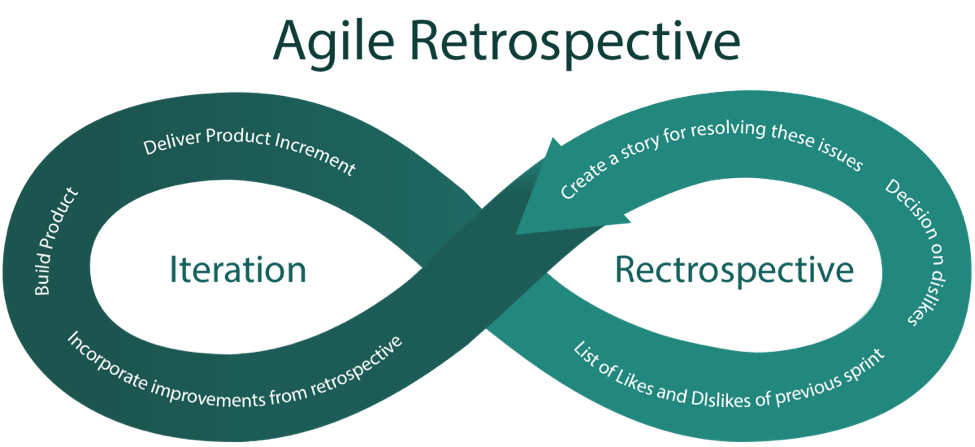
After each sprint or iteration, all team members gather together to discuss what went well, what could be improved, and how they can improve in future sprints.
Productivity-wise, both methods are incredibly effective because they help teams identify problems early on when they’re easier and faster to fix.
By allowing people to see how their actions affect results, feedback loops increase the rate at which individuals learn and improve their performance.
Conclusion
As we all know, the software development industry is in a state of constant change. What was new yesterday may be old hat today.
To keep up with these changes, companies need to continuously improve their processes, tools, and techniques.
In this article, we’ve looked at some ways to increase productivity in software development teams by improving their overall efficiency.
Companies can do this by creating a culture of learning, enabling the team to understand how their work fits into the big picture, and offering them tools that help them be more productive.
We hope this article has inspired you to look at your own company through a fresh pair of eyes and develop new ways to improve your team’s productivity levels!




